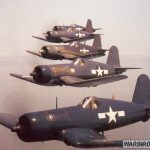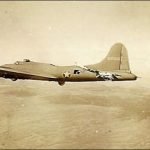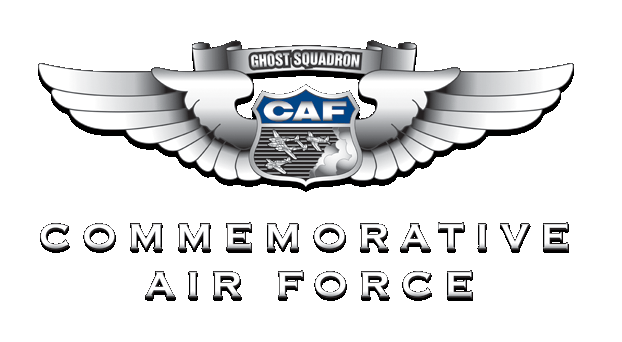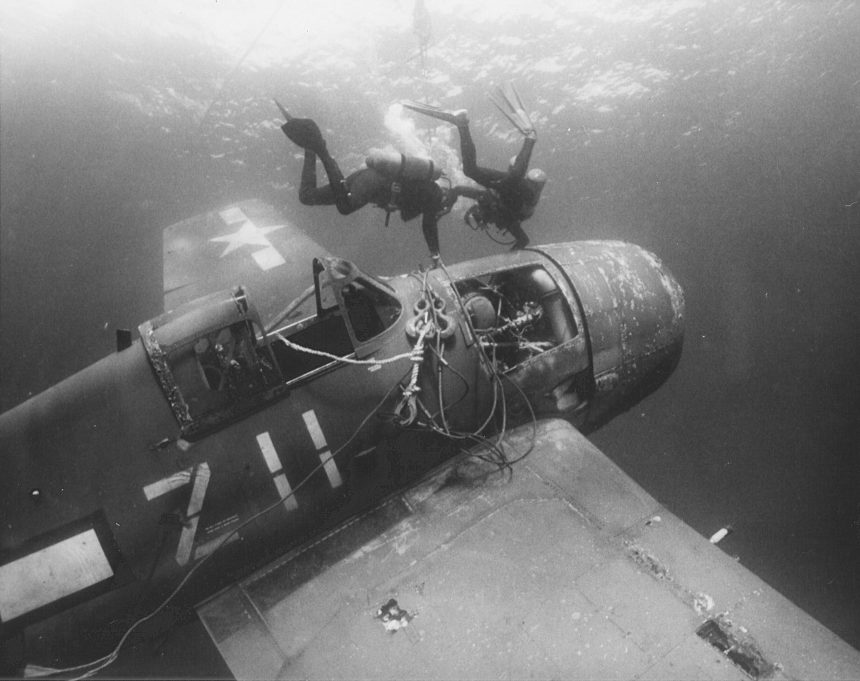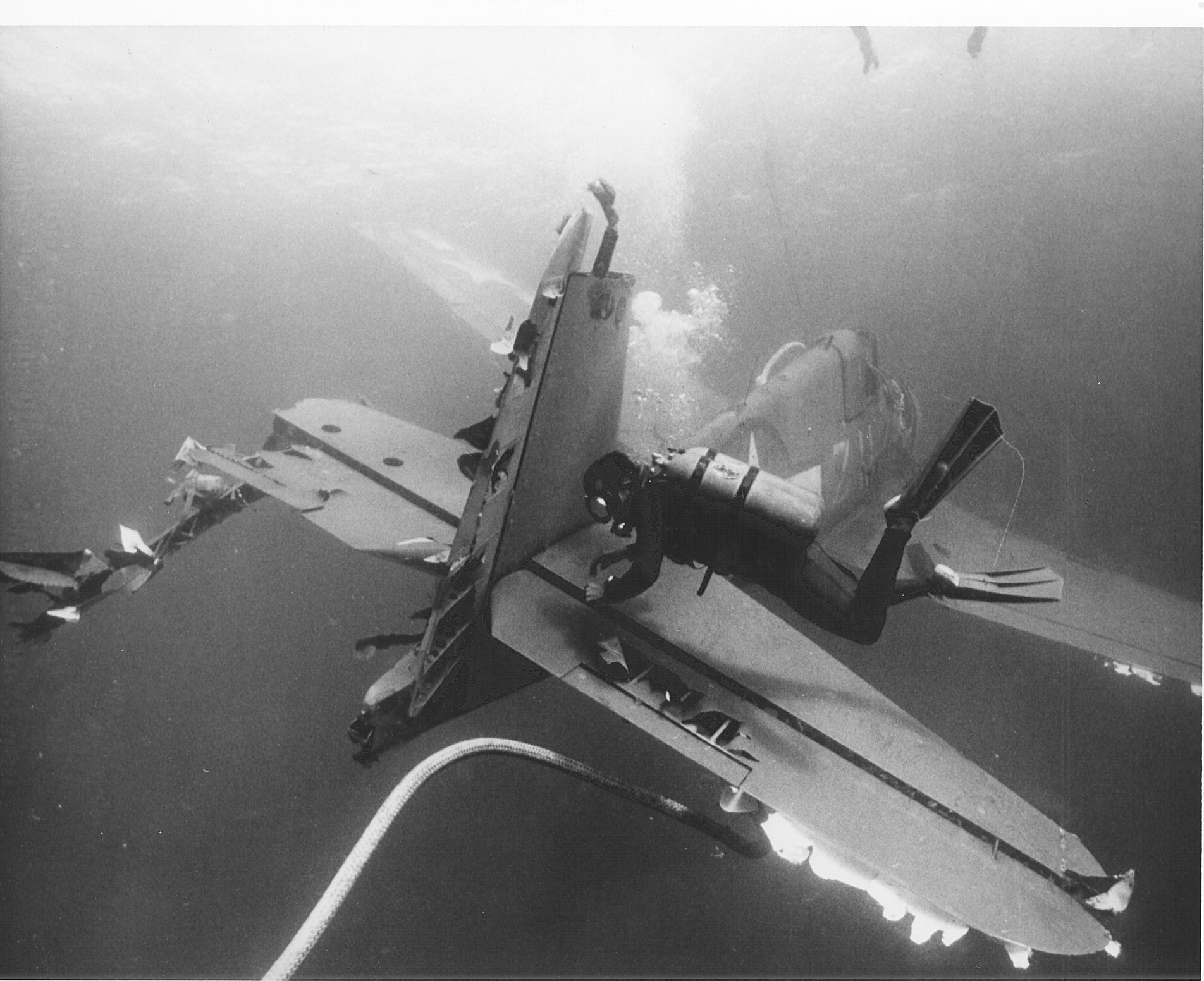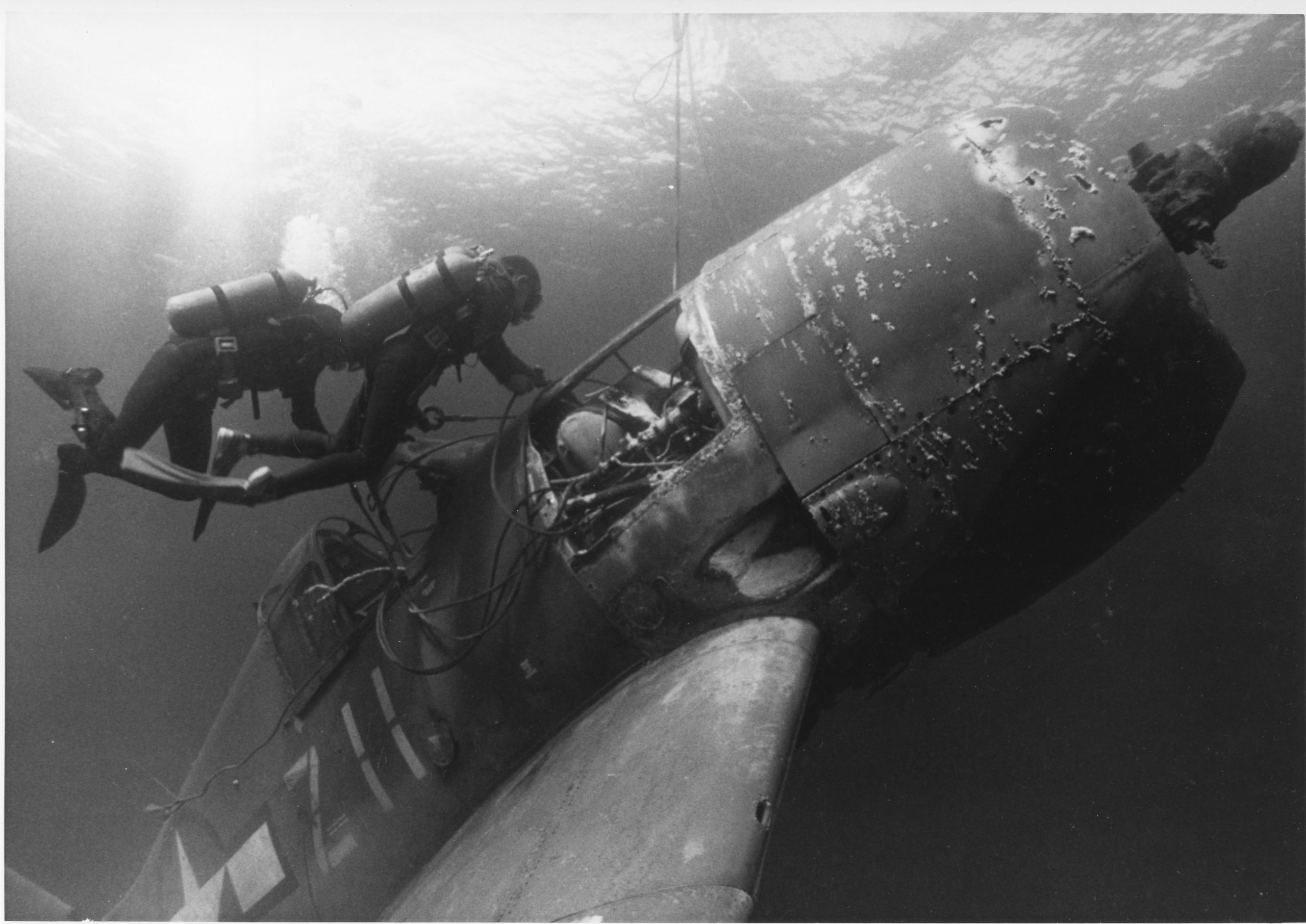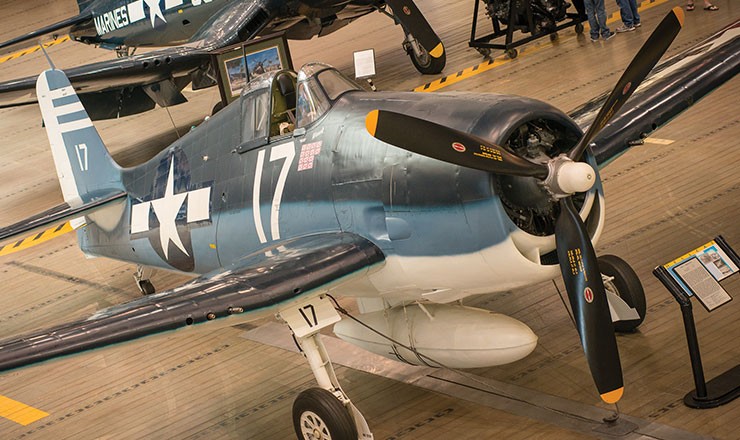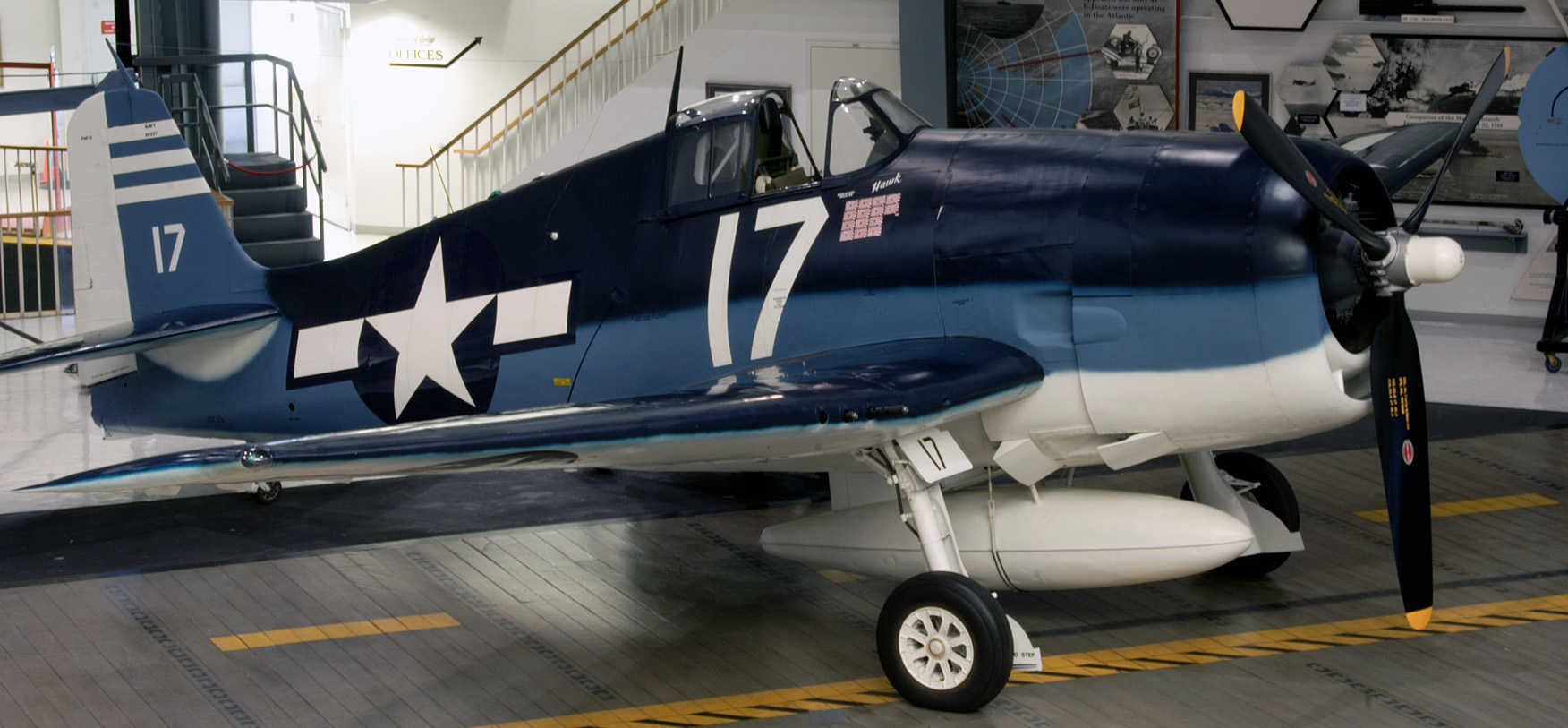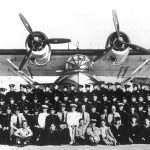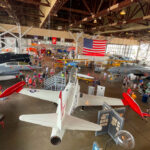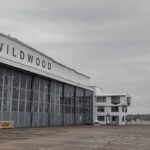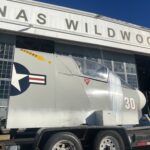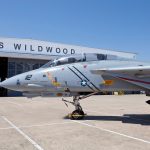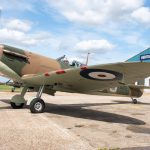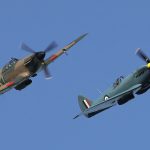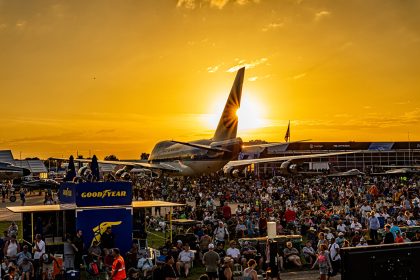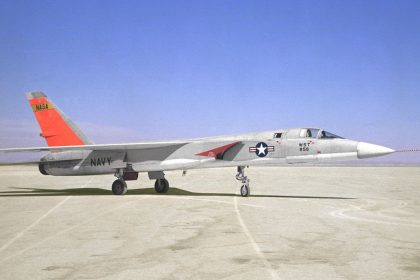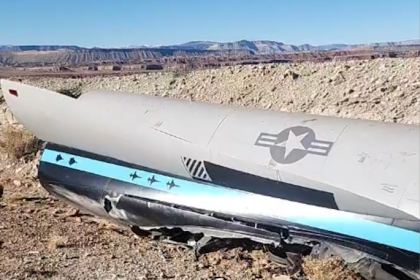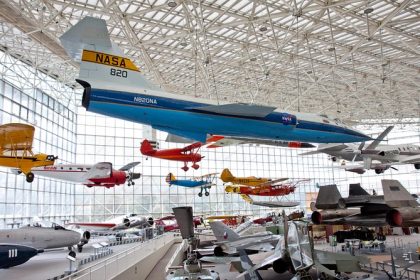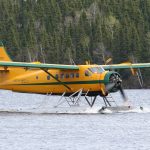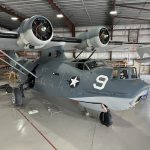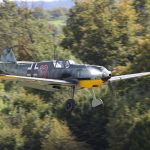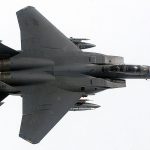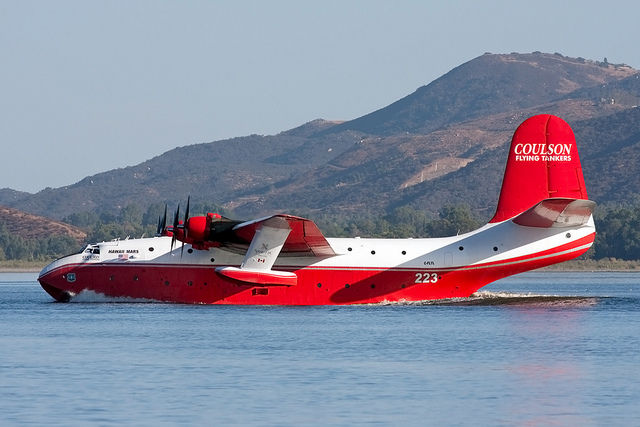Inside every museum, every artifact has a story. At the Naval Air Station Wildwood Aviation Museum in Lower Township, New Jersey, one Grumman F6F Hellcat has quite the story to tell. From crashing into the Pacific Ocean during WWII and spending 26 years on the bottom of the Pacific, to having a cameo in a 1980s romantic comedy and being displayed in three museums, this is the story of Grumman F6F-3 Hellcat, Bureau Number 66237.
Built in the Grumman Aircraft Corporation plant in Bethpage, on New York’s Long Island as construction number A-1257 as part of production contract C-90071, was accepted by the US Navy on September 22, 1943, and was delivered to the Navy one day later on September 23. By October 2, the aircraft was assigned to Carrier Aircraft Service Unit 5 (CASU-5) at NAS North Island, San Diego, California, and was later reassigned to Fighter Squadron 21 (VF-21), also at North Island. The unit had originally been formed as Escort Scouting Squadron (VGS) 11 on August 5, 1942, and later reformed as Composite Squadron (VC) 11 on March 1, 1943. The squadron had been rotated back from a deployment to Henderson Field, Guadalcanal in the summer of 1943 while flying Grumman F4F Wildcats, and was now training stateside on the use of the F6F Hellcat before departing for their second deployment under the new designation VF-21. But due to a twist of fate, aircraft 66237 would not be among their number to be sent across the Pacific, as it would have a very short career in the US Navy.
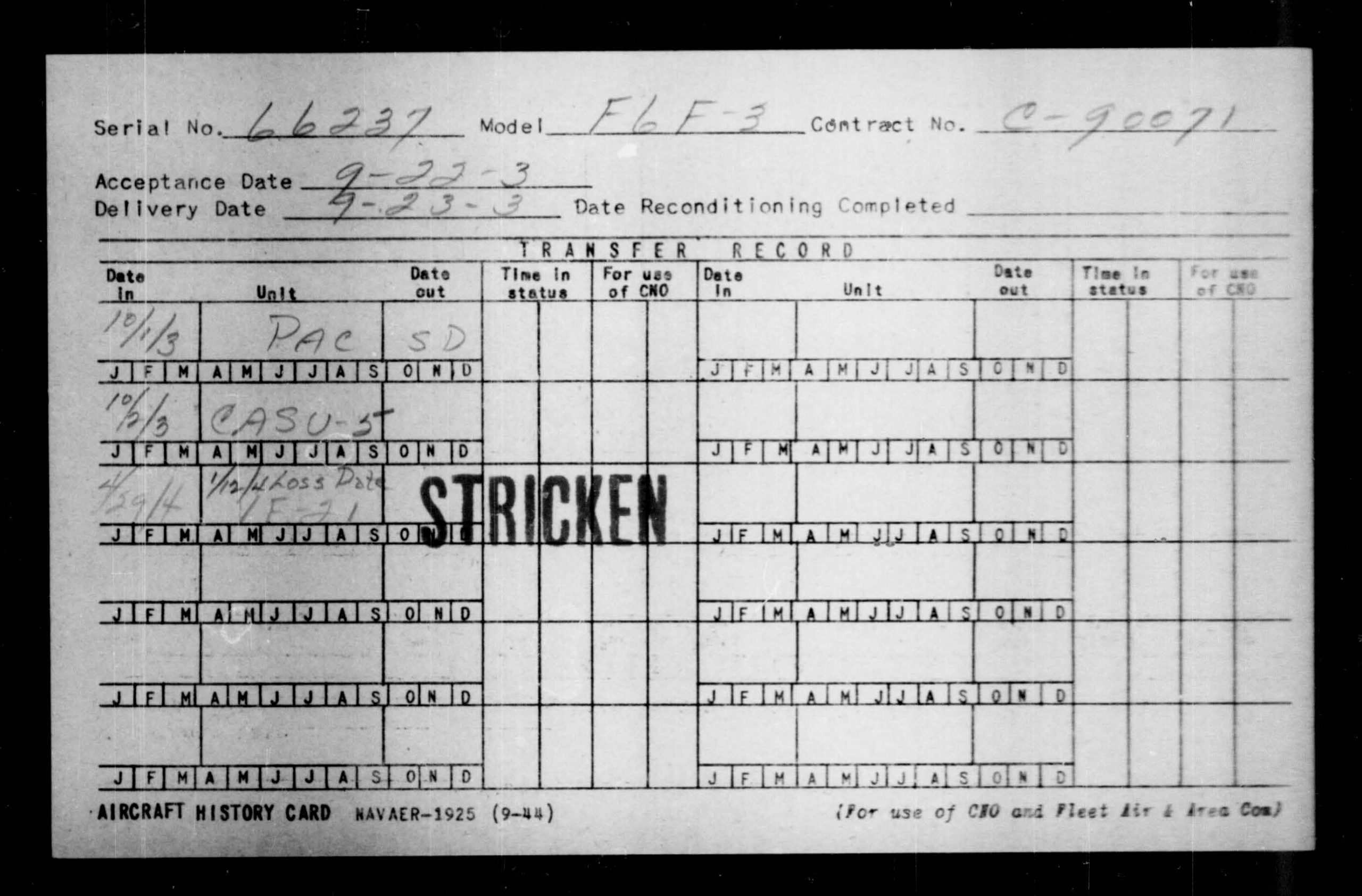
On January 12, 1944, Ensign Robert Francis Thomas of Staten Island, NY, took off from NAS North Island in F6F-3 Hellcat 66237, which was wearing the fuselage code Z11. The aircraft had been freshly overhauled, and Ensign Thomas was assigned to conduct a test flight in the aircraft. About 12 miles offshore and flying at 20,000 feet, Thomas spotted a training flight below him at 7,000 feet. Deciding to practice a dive as though he were diving on a formation of Japanese aircraft, he put the nose of the Hellcat down and began building up speed in the steep dive. While slightly above the formation, Ensign Thomas pulled back on the stick, but as he pulled out of his dive, the Pratt & Whitney R-2800 Double Wasp on BuNo 66237 suddenly quit, and he was still too far to make it to North Island. After declaring an emergency, Ensign Thomas ditched his Hellcat off the San Diego coast. Soon, the Hellcat weighing over 12,500 lbs began to sink rapidly, and Thomas could not escape the cockpit until the aircraft was underwater, likely when the water pressure holding his canopy shut equalized with the water in the cockpit. Fortunately, a Coast Guard Cutter was in the area, and rescued the young naval aviator so he could fly another day. As for Hellcat 66237, no man had any reason to think that the fighter would ever be seen by human eyes again, and the aircraft was officially stricken from the Navy’s registry on April 29, 1944.
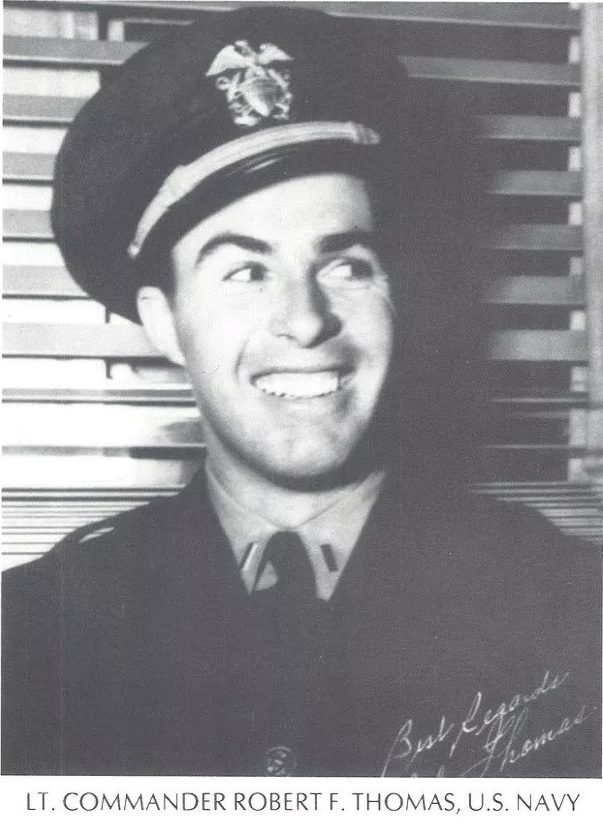
After his rescue from the sea, Ensign Thomas would go on to have an incredible career during the war. He remained with VF-21 and was assigned with the squadron to the light carrier USS Belleau Wood (CVL-24). During the Battle of Leyte Gulf, Thomas was flying fighter cover for an aerial attack on October 15, 1944, when he engaged seven Japanese aircraft, downing four of them in the subsequent dogfight, returning to the Belleau Wood with more than 200 bullet holes in his Hellcat. Ten days later on October 25, he shot down another Japanese aircraft, becoming an ace. For these actions, Ensign Robert R. Thomas earned the Navy Cross. Thomas survived the war having scored 5.25 aerial victories (the percentage due on account of a shared victory). He also earned the Distinguished Flying Cross and the Air Medal. After the war, Robert Thomas remained in the Naval Reserves until 1966, retiring at the rank of Lieutenant Commander, and worked as an air traffic control supervisor at the New York Air Traffic Control Center for 30 years, and would live to the age of 87.
Twenty-six years after F6F-3 BuNo 66237 sank off the coast of California, the United States Navy was conducting tests with a deep-sea research submersible developed by Lockheed Aircraft called Deep Quest. On March 17, 1970, Deep Quest’s operators were 12 miles off San Diego and 3,400 feet below the ocean’s surface when their vessel’s instruments detected the presence of a large metallic object. As they guided their craft through the murky depths, they found the remarkably intact remains of F6F-3 BuNo 66237, sitting right side up and level with the sea floor, its paint appearing almost as though the aircraft had only been lost for a day, with the training code Z11 still clearly visible on the sides of the fuselage. Lawrence A. “Larry” Shumaker, chief pilot of the Deep Quest, related his first impressions of the Hellcat to aviation author John Hathaway: “The interesting thing was its excellent condition. We hovered over the plane and could look directly into the open cockpit. All the instruments were visible and had very little marine growth on them.”
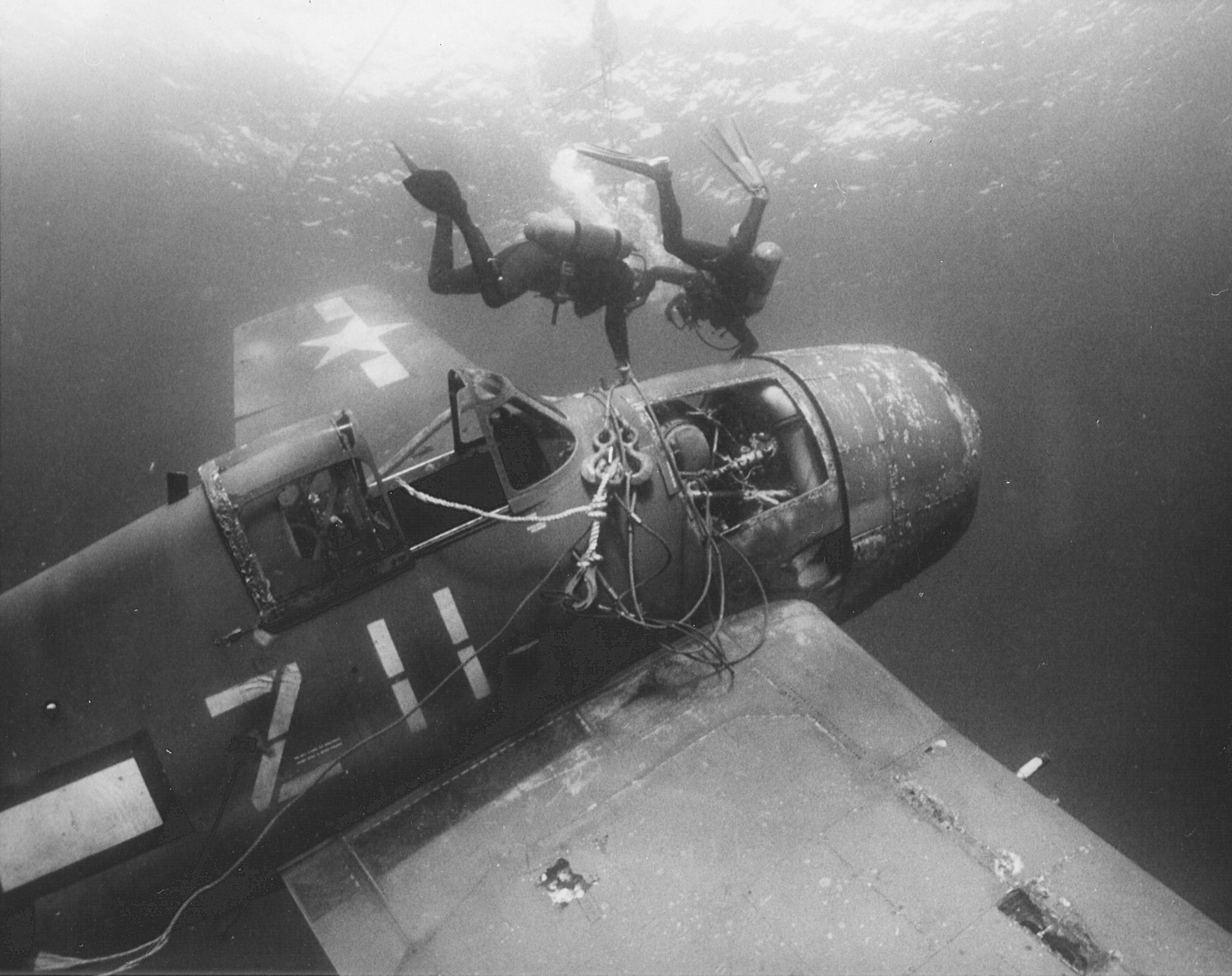
The aircraft’s unusually good condition and apparent lack of deterioration prompted the Navy to investigate the aircraft further and even mount an effort to recover the Hellcat for scientific study before allowing it to be preserved in a museum. On October 9, 1970, the WWII-vintage auxiliary repair dock USS White Sands (ARD-20) set out from Naval Base San Diego to the coordinates of the sunken Hellcat. The Deep Quest dove back onto the wreck, and conveniently, the aircraft was missing the panels that covered the attachment points between the engine and the cockpit. After looping a cable to the aircraft, a special winch on the White Sands hoisted the Hellcat off the ocean floor, where it was intended to be brought to 50 feet below the surface for explosive disposal divers to assess and dispose of any potential ordinance carried on the aircraft, and attach a heavy line for the final lift into the floating dry dock. Twice, lines attached to the aircraft snapped during the lift and twice new lines were attached to Hellcat 66237 before it was lost to the sea for a second time.
In speaking with KOGO Channel 10 News San Diego reporter Ron Sweig, Shumaker describes the process of attaching the cable to the Hellcat using the Deep Quest: “Yesterday we went down and…the plane was sitting perfectly flat on the sea floor, with two panels missing right in the front where the lift points are, which made it really easy. We went down, we passed two wire straps through the engine mounting, attached them to the 5,000 feet of line we were carrying on Deep Quest, and ascended to the surface unreeling the line. Once on the surface, we handed the line over to the Navy.” With the Hellcat now moved just aft of the White Sands, still submerged a few feet below the surface of the Pacific, Navy divers attached a cable to the Hellcat from the floating dry dock’s heavy lifting crane, and attach maneuvering lines for the White Sands’ crew to navigate the plane safely through the stern gate of the White Sands, which was intentionally flooded to a predetermined depth for the entry of the F6F-3.
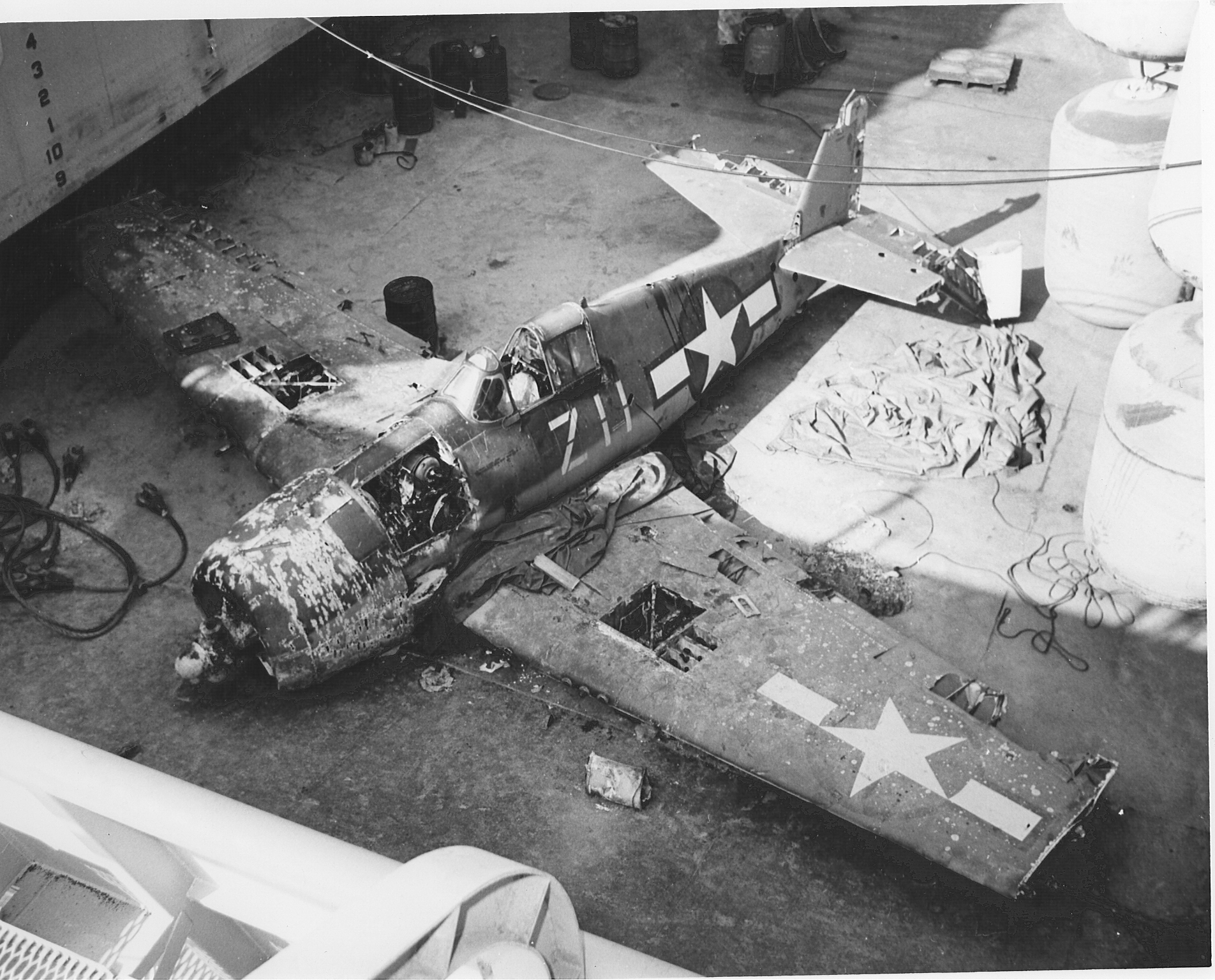
Divers monitored the attitude of the F6F-3 as it entered the gates of the White Sands’ dry dock, while sailors holding the maneuvering lines coordinated their efforts to ensure that the Hellcat would transit the gate undamaged, as the 42 feet, 10-inch wingspan of the WWII fighter allowed for just one foot of clearance on each side. Fortunately, the combined skill of the crew of the USS White Sands would see that the F6F-3 Hellcat made it through the gate successfully, and the floating dry dock could safely pump the water out. After that Hellcat 66237 was brought to the Navy Submarine Support Facility at Point Loma, San Diego for further study. Contemporary news coverage of the recovery of Hellcat BuNo 66237 has also been archived by the San Diego Air and Space Museum HERE.

Although there was some corrosion, with the magnesium components missing, the Navy technicians were amazed at the overall shape of the aircraft, considering it had sat at the bottom of the Pacific Ocean for 26 years. When the cockpit instruments were inspected, the faces had deteriorated, but the small components remained, and it was felt by those who evaluated them that little work would be required to restore the cockpit instruments to working condition. Meanwhile, the port inboard Browning .50 caliber machine gun was removed and sent to the Naval Weapons Laboratory, where it was cleaned, lubricated, inspected, and prepared for test firing, all without replacing any parts. A subsequent firing test demonstrated that the gun fired 30 rounds with no mechanical faults, and a bore gauge passed through the barrel revealed no signs of tight spots. Even more remarkable, the hydraulic fluid and oil tanks were not crushed or dented, and the hydraulic fluid and oil found within was virtually uncontaminated by seawater. As for marine life, or lack thereof, there were no barnacles on the F6F-3, and the only infestation damage came from wood borers eating through the head rest and its wooden frame. For its time, the recovery of Hellcat 66237 was one of the most remarkable events in the warbird community.
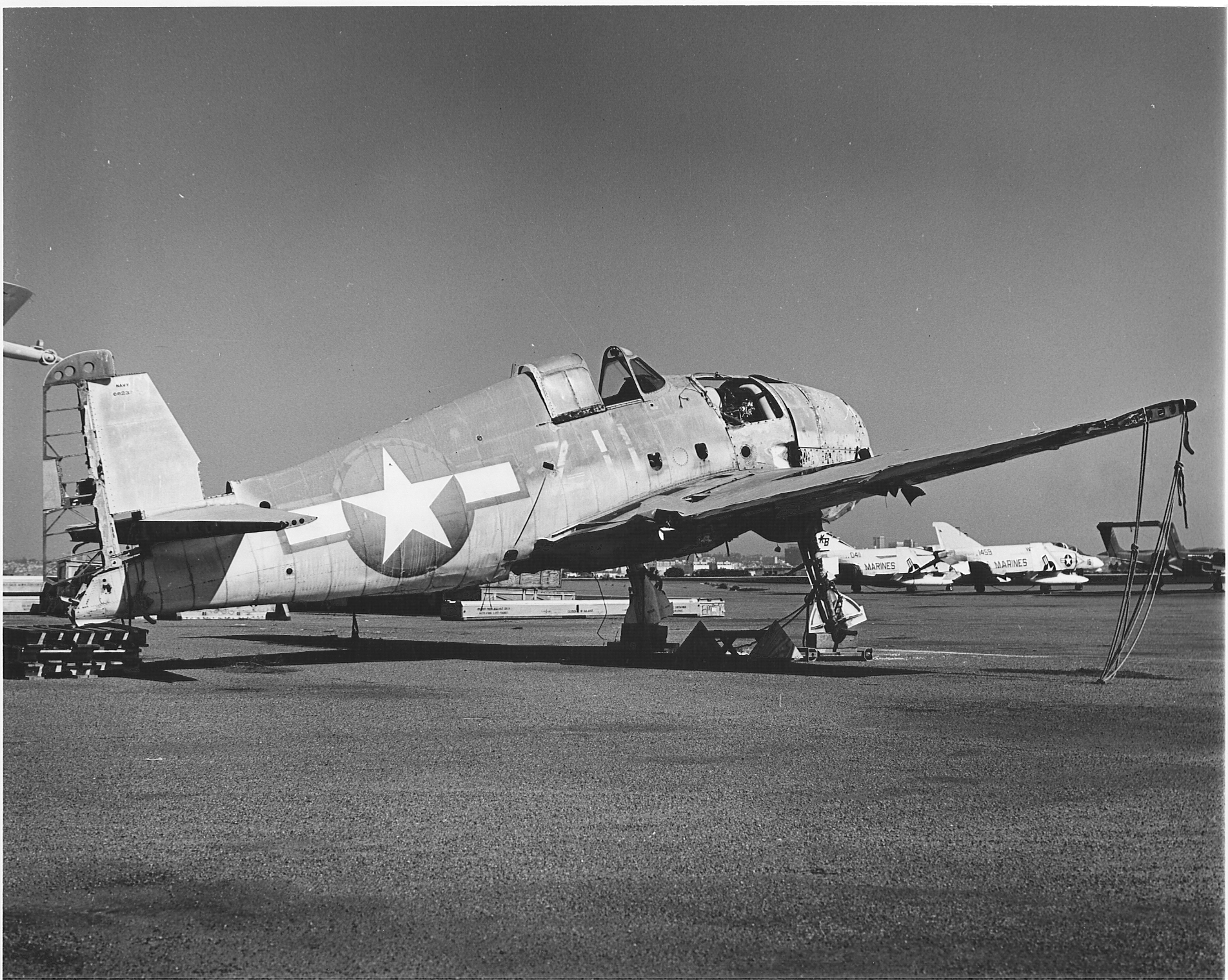
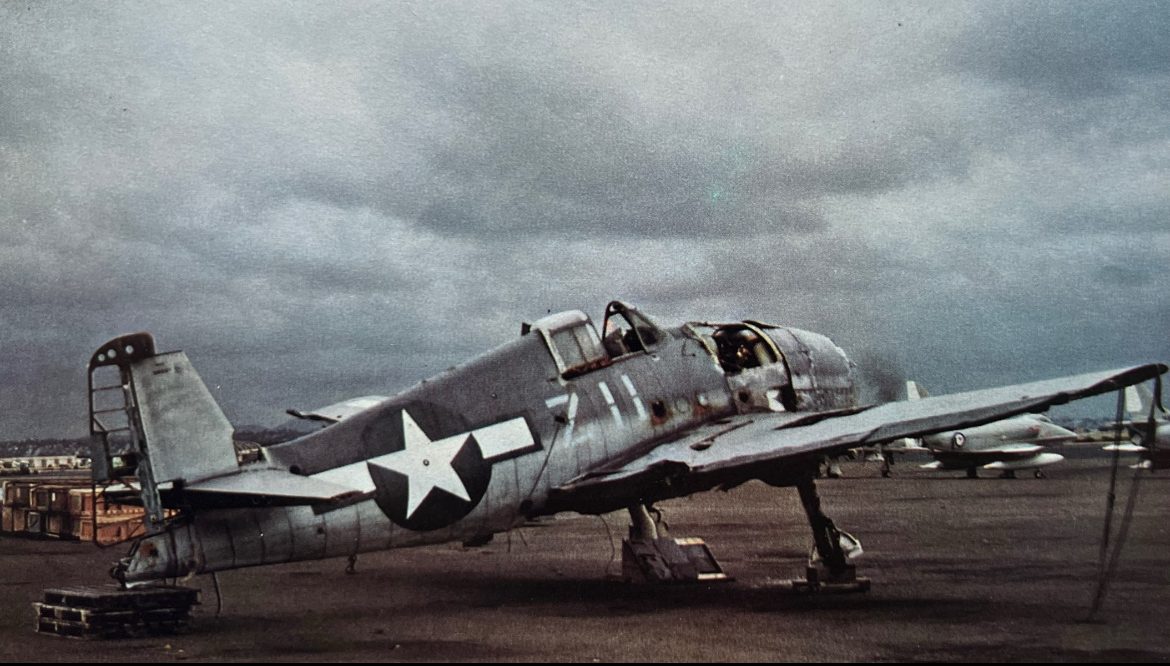
When this battery of tests was concluded, the F6F-3 Hellcat was brought to NAS North Island, the very air station it had departed nearly 30 years prior, and it was hoped that the aircraft would be placed on display at the San Diego Aerospace Museum (now the San Diego Air and Space Museum), which was then housed in Balboa Park’s Electric Building (now the Casa de Balboa) from 1915. However, after four years of sitting out in the open sea air at NAS North Island, it was decided to ship Hellcat BuNo 66237 to the Pima County Air Museum (now the Pima Air and Space Museum) in Tucson, Arizona. It was displayed outdoors and un-restored in the desert museum for 18 years from 1974 to 1992.
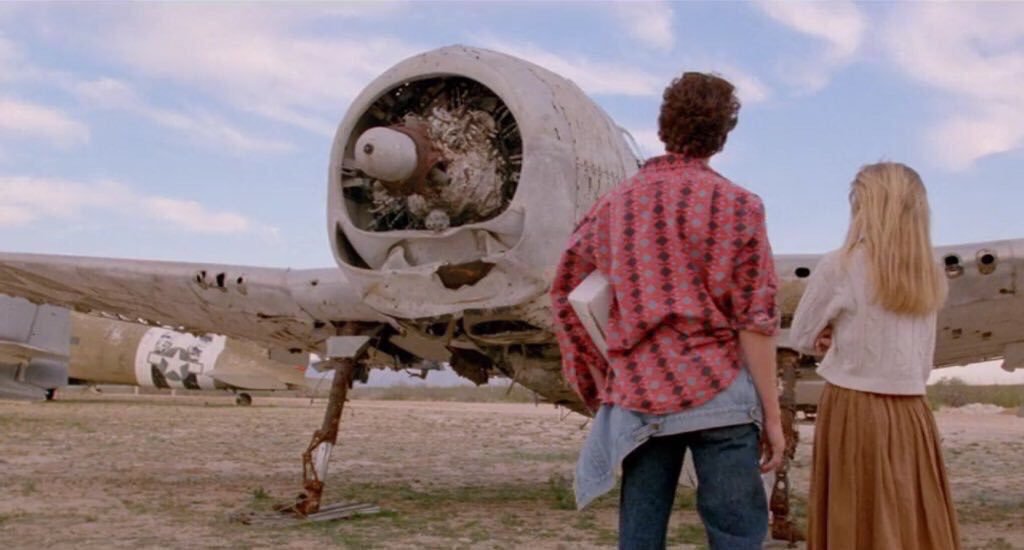
At Pima, the aircraft was one of several aircraft featured in the 1987 teen romantic comedy film Can’t Buy Me Love, starring Patrick Dempsey and Amanda Peterson as high school students Ronald Miller and Cindy Mancini, who live and go to school in Tucson. On one of their dates, Ronald takes Cindy through the “Boneyard” at Davis-Monthan Air Force Base, though the closeups are with aircraft at the Pima County Air Museum due to the ease of access compared to the Air Force Boneyard across the street from the museum. In the film, the Hellcat is referred to as having ditched off the coast of Japan during the war and was only recovered the year prior to the film’s setting, with Ronald telling Cindy that the pilot who flew the Hellcat spent the whole day looking at his old plane for the first time in 40 years. Another Grumman aircraft featured in the film is the Pima Air and Space Museum’s F9F-4 Panther, Bureau Number 125183, which has since been restored and remains on display at Pima.
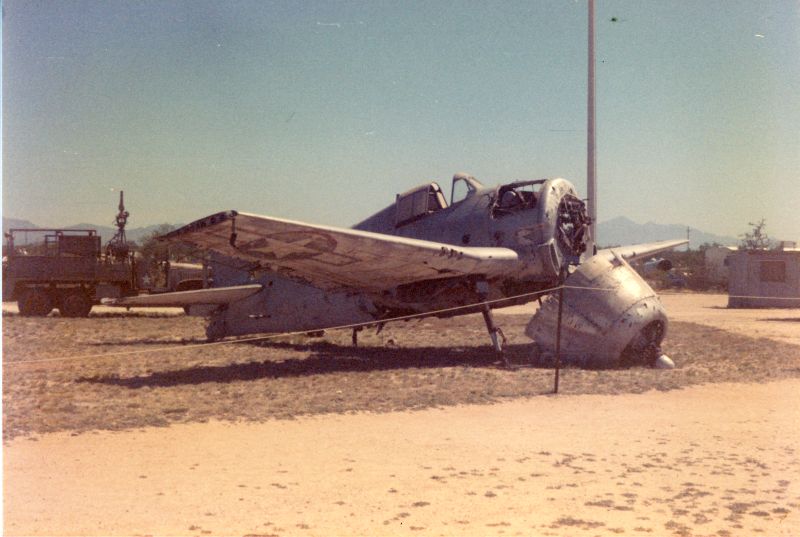
However, at one point during F6F-3 Hellcat 66237’s tenure at Pima, the engine and cowling fell off the aircraft, and by 1992, it was decided to transfer the aircraft to the National Naval Aviation Museum in Pensacola, Florida. Although the NNAM already had an F6F-5 (Bureau Number 94203) on display since 1971, it did not have an example of the rarer -3 variant of the Hellcat, which was the first variant of the Grumman “Iron Works” fighter to see combat over the Pacific.
The work of restoring the aircraft was contracted by the National Naval Aviation Museum to Roy Stafford of Jacksonville, Florida. With his restoration shop, Black Shadow Aviation, being located at Herlong Recreational Airport, Stafford got to work restoring the Hellcat for the Naval Aviation Museum. Despite its great condition upon its recovery in 1970, there were still plenty of corroded or damaged parts to replace. One source of replacement parts came from San Nicolas Island, one of the California Channel Islands which is used by the US Navy as a weapons testing and training area. On the island, there were the wrecks of four F6F-5K Hellcats that had been converted into target drones during the 1950s. The Navy agreed to take parts from the four wrecks that would be necessary to restore F6F-3 BuNo 66237.
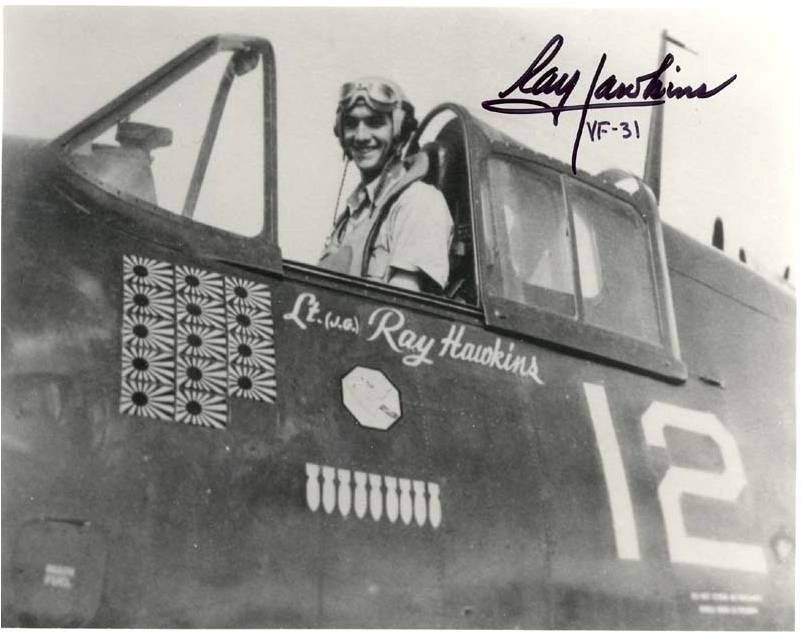
Additionally, because the aircraft was not a combat veteran, 66237 would be repainted to depict a Hellcat that had flown in combat, just as the museum’s F6F-5 had been restored with the markings of Minsi III, the Hellcat flown by the Navy’s highest-scoring ace of WWII, David McCampbell. The museum decided to have F6F-3 66237 painted in the markings of the Hellcat flown by Arthur Ray “Hawk” Hawkins, a Navy ace with 14 kills to his credit while flying with Fighter Squadron 31 (VF-31) off the light carrier USS Cabot (CVL-28). After a 31-year career in the US Navy, Hawkins served as the secretary of the Naval Aviation Museum Foundation. When the aircraft’s restoration was completed, it was placed on display on a recreation of the USS Cabot‘s flight deck in the museum’s West Wing, alongside other naval aircraft of WWII in the gallery. For nearly 30 years, the aircraft would be on display in Pensacola, but the resurrection of yet another Hellcat from the depths would see 66237 make one final move.
Since the 1980s, the National Naval Aviation Museum has sponsored the recovery of WWII naval aircraft from the bottom of Lake Michigan, where newly minted naval aviators earned their carrier qualifications taking off and landing aboard the two paddle-wheel training carriers USS Wolverine (IX-64) and USS Sable (IX-81) from 1942 to 1945. Many of the aircraft recovered from the cold murky depths of Lake Michigan were recovered by A & T Recovery, and on November 30, 2009, they exhumed another Grumman F6F-3 Hellcat, which they towed to the marina of Waukegan, Illinois, just north of Chicago.
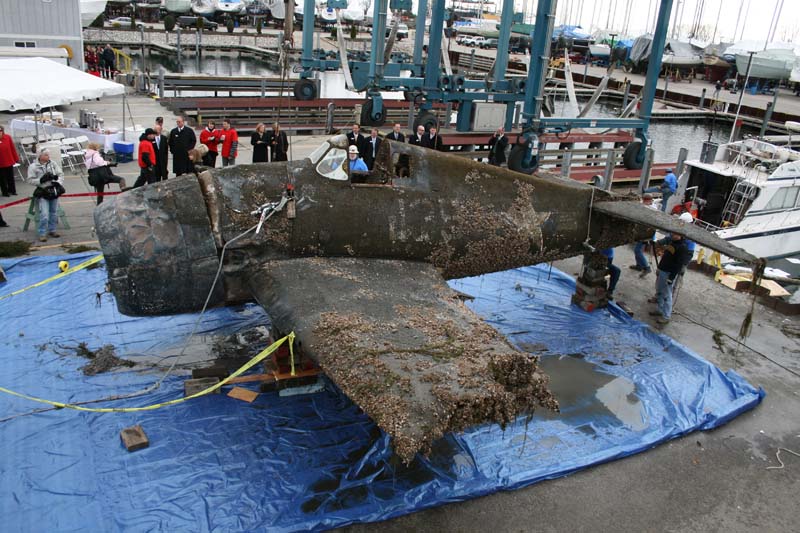
Research before the recovery found that this aircraft was Bureau Number 25910, which was accepted by the US Navy on July 7, 1943. Like BuNo 66237, BuNo 25910 was flown to the San Diego area of California, joining Fighting Squadron 38 (VF-38) at Naval Auxiliary Air Station Otay Mesa, but made it with the squadron to the South Pacific, seeing combat against the Japanese in the Solomon Islands, operating from Henderson Field on Guadalcanal and Munda Point Airfield on New Georgia Island, and attacking Japanese bases on Vella Lavella and Bougainville (which were both taken over by the Americans). BuNo 25910 even escorted Admiral William “Bull” Halsey on September 20, 1943, during his inspection of naval forces on New Georgia Island and Guadalcanal.

By 1944, F6F-3 Hellcat 25910 was rotated back to the United States and re-assigned to the Carrier Qualification Training Unit (CQTU) at NAS Glenview, Illinois. On January 5, 1945, Lieutenant, junior grade Walter B. Elcock was at the controls of BuNo 25910, lining up for an approach onto the training carrier USS Sable. During the approach, he came in too low with the right wing at a downward angle, forcing the aircraft off the flight deck. Though briefly held to the side of the carrier by its tailhook, Hellcat 25910 then plunged 30 feet into the frigid water, with Elcock freeing himself from the cockpit 10 feet below the lake’s surface, and swimming clear of the sinking fighter to be rescued by a ‘crash-boat’.
Sixty-four years later, Hellcat 25910 was brought back to the surface by A & T Recovery, with the $250,000 operation being funded by Enterprise Rent-A-Car CEO Andy Talyor, whose father Jack Taylor founded the company and named it for the aircraft carrier USS Enterprise (CV-6), on which he served as an F6F Hellcat pilot during WWII. Among the attendees for the raising of Hellcat 25910 were Andy Taylor, David Grumman, the son of Grumman Aircraft founder Leroy Grumman, and Hunter Brawley, the grandson of Walter Elcock. After being placed on dry land for the first time in sixty-four years, Brawley was given the honor of being the first to sit in the cockpit of the Hellcat since his grandfather flew it in January 1945. After that, the Hellcat was transported to Pensacola, FL, and after over 15,000 manhours of restoration, the aircraft was placed on display at the end of 2013, which we covered HERE. A portion of the fuselage was intentionally left unrestored to mark its long winding journey to the museum.
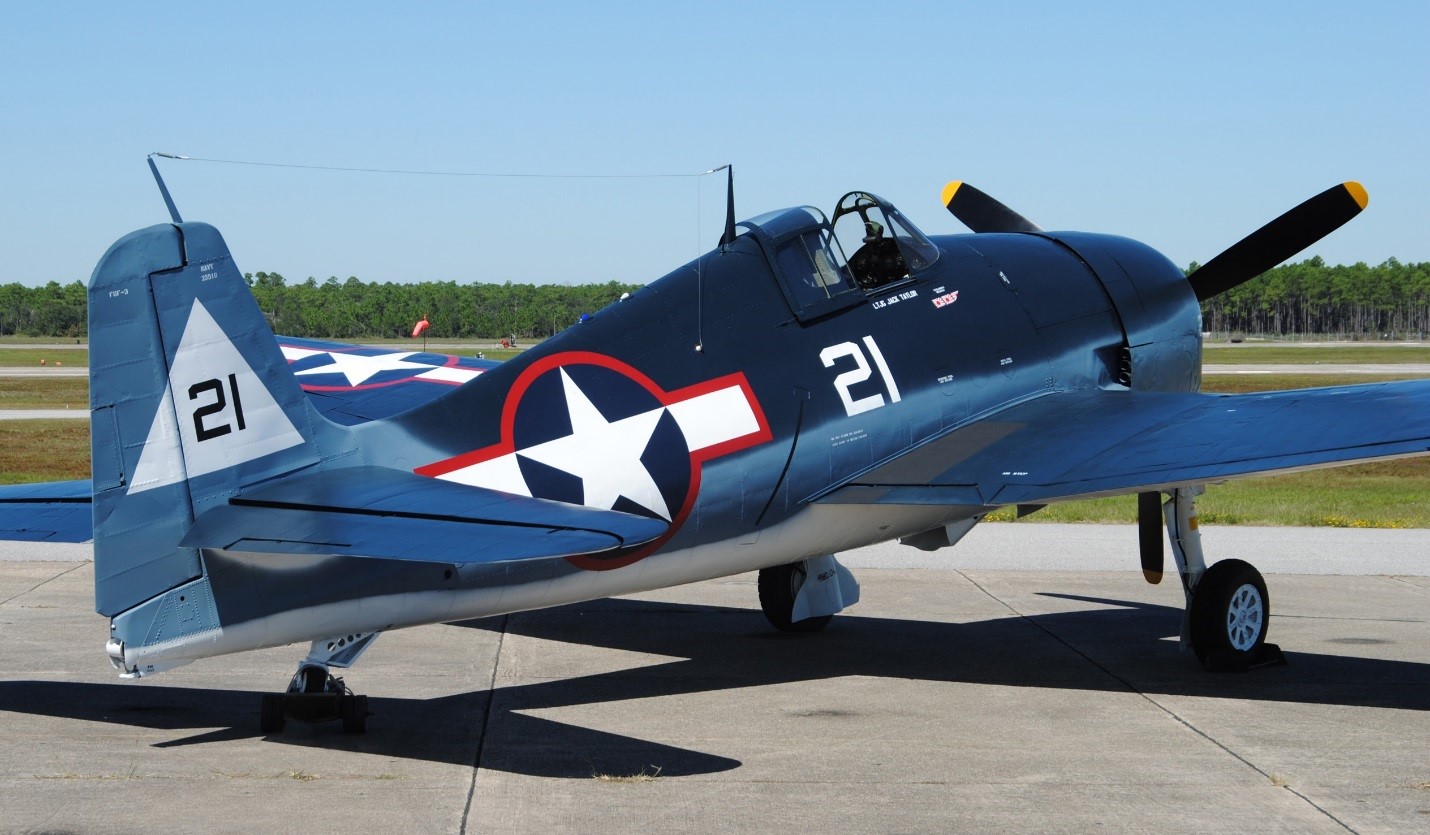
But with the restoration of Hellcat 25910 complete, Hellcat 66237, which had emerged from the Pacific depths in 1970 and been on display in Pensacola since the 1990s, was removed from display and placed in storage in the museum’s storage and restoration hangars, the very hangars that had restored Hellcat 25910. The aircraft even underwent a touch-up restoration, focusing on its right wing, but as the restoration continued, the National Naval Aviation Museum began searching for an affiliate museum to display the Hellcat.
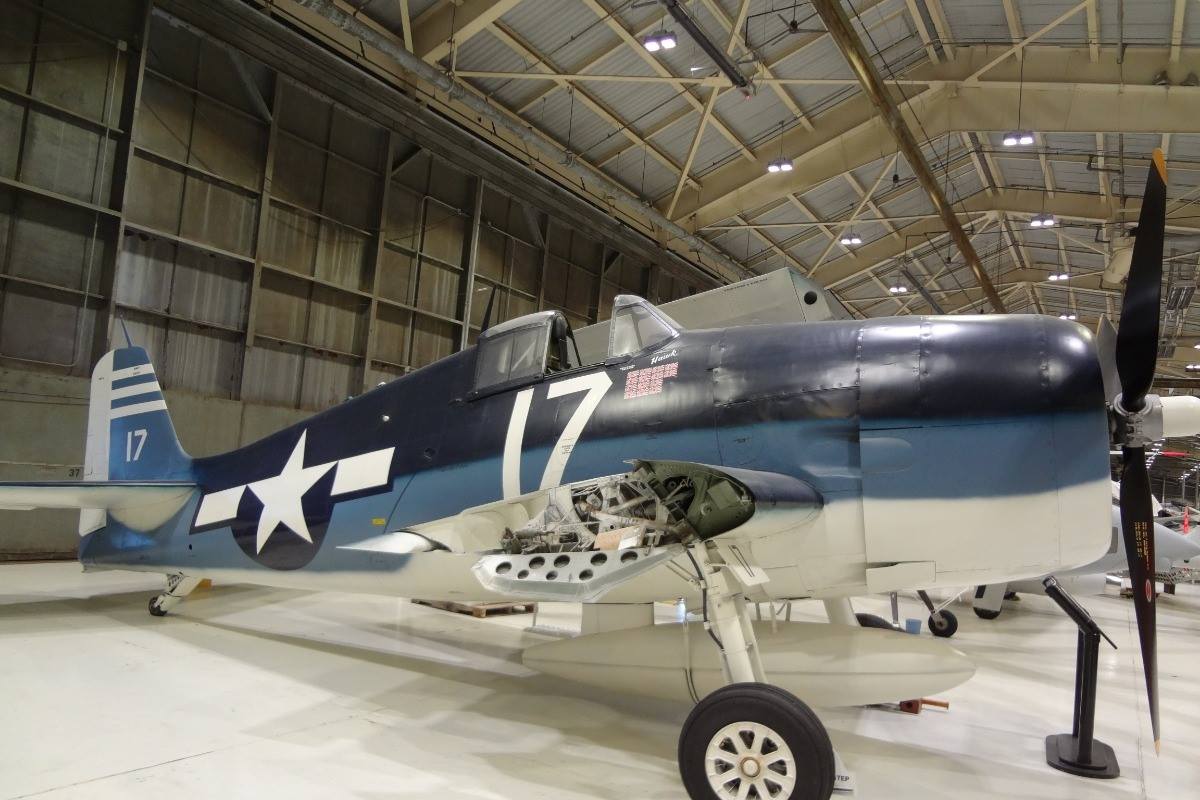
In 2019, even as the restoration was still underway, Hellcat 66237 found a new home at the Naval Air Station Wildwood Aviation Museum in Lower Township, New Jersey.
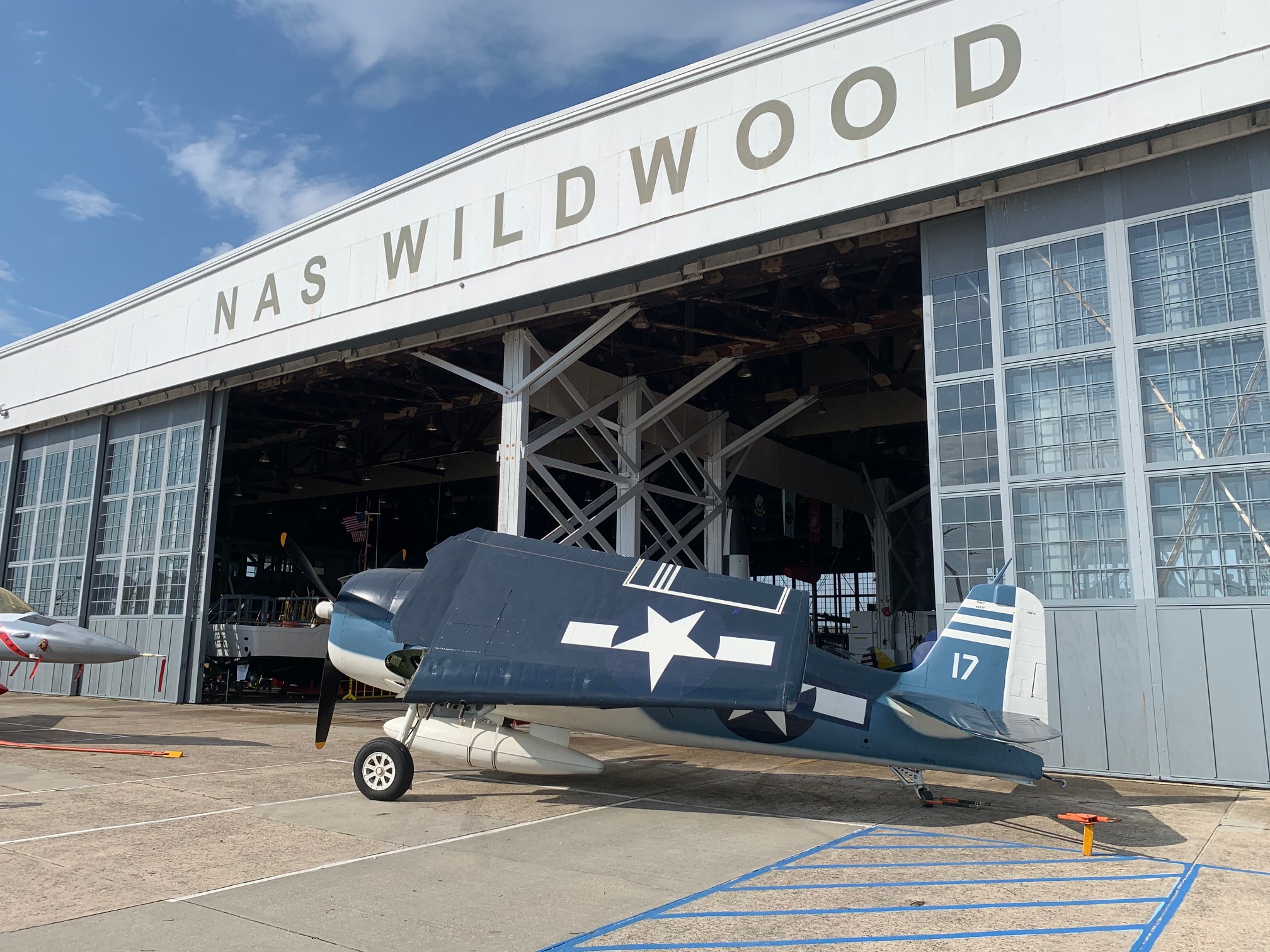
This museum is located at Cape May Airport, which was originally constructed in 1941 as Naval Air Station Rio Grande, which was renamed NAS Wildwood in 1943. During WWII, Wildwood served as a training facility for dive bomber squadrons that would go on to fight in the Pacific. After the war, NAS Wildwood was repurposed for civilian air travel as Cap May Airport. In 1997, Hangar One of the former NAS Wildwood became the home as the NAS Wildwood Aviation Museum, which has become a home for over 25 airplanes and helicopters, ranging from the WWII to the Vietnam War eras. At the start of May 2019, Hellcat 66237 was shipped to the museum by Chuck Mosely of All Coast Aircraft Recovery and was then towed into the WWII-era hangar. Over the next few years, volunteers at the NAS Wildwood Aviation Museum restored the right wing of the Hellcat and have since reinstalled it to the rest of the aircraft, which still carries the markings of Ray Hawkins’ Hellcat that flew off the USS Cabot. If you ever happen to be in southern New Jersey, be sure to visit the Naval Air Station Wildwood Aviation Museum and see Grumman F6F-3 Hellcat 66237 on display there. For more information, visit the NAS Wildwood Aviation Museum website HERE.





